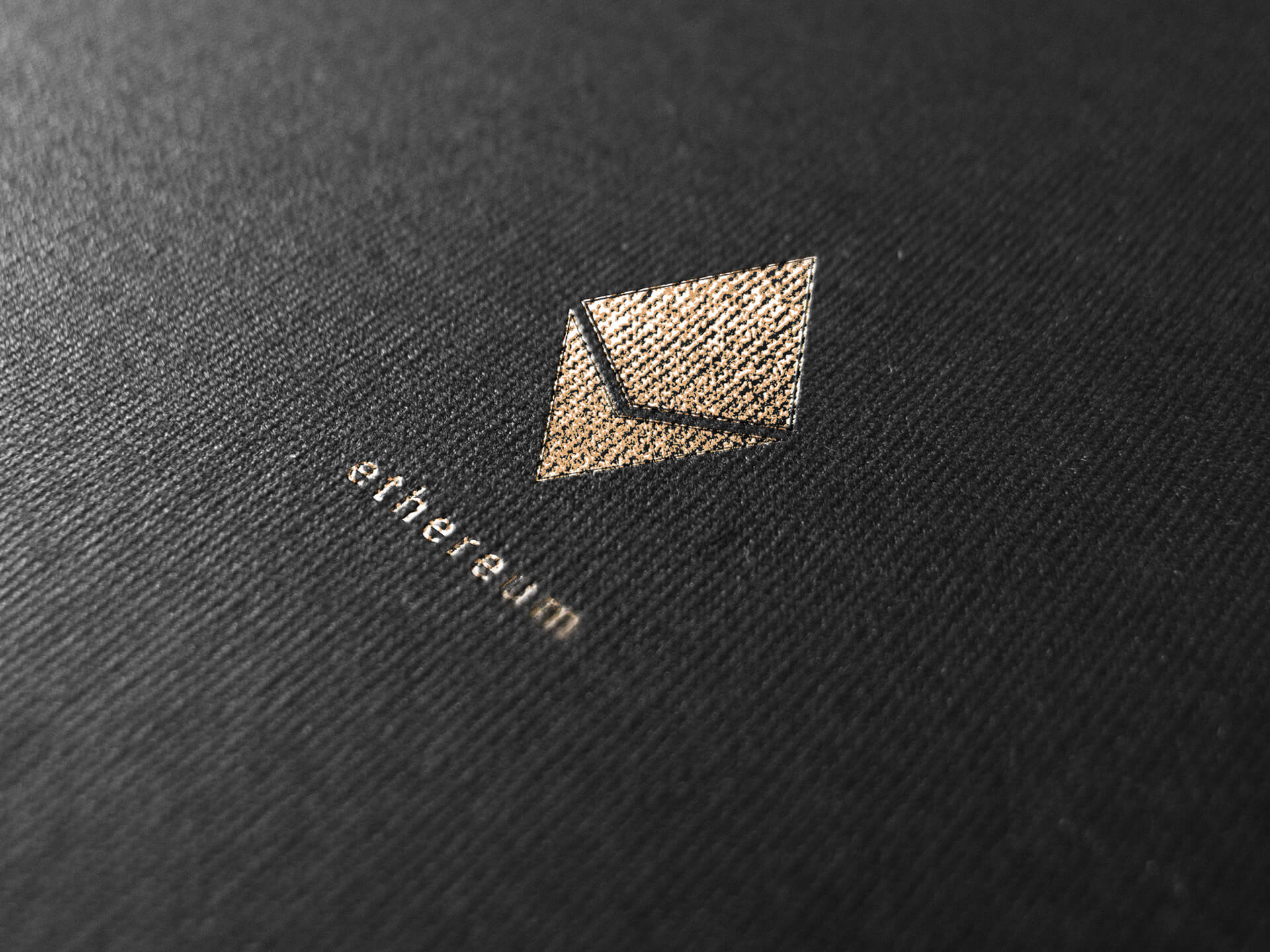Although they are often shrouded in mystery and technical details, you've probably heard of cryptocurrencies. Whether it's Bitcoin, Litecoin, Dash, Ripple, or most recently Ethereum, the list goes on with different types of digital currency. A few years back, we wrote a guide on mining Litecoin, that was around the time Bitcoin was already too hard to mine using a home computer, and Litecoin was being pushed as the next viable alternative for using traditional desktop graphics cards.
If you've ever tried getting into cryptocurrencies, you were probably met with a barrage of technical terms and buzzwords. I heard I can make easy money by mining on my home computer; how does that work? Why are there so many types of coins? How do I get started buying and selling cryptocurrencies? In this article we'll focus on the state of mining, exploring the practical side of it, as we hopefully demystify some of the world of digital currencies.
Cryptocurrencies, like standard fiat currencies such as the US Dollar, don't have any inherent value, meaning they're not backed by a physical commodity. Currencies such as the Euro or US Dollar are backed by the strength of the government that issues it and the relative stability of its value. Cryptocurrencies, on the other hand, are governed by the network of Bitcoin operators (miners) who agree to use the same algorithm.
In other words, a cryptocurrency like Bitcoin is only worth something because people agree that it is worth a certain value and that value is accepted for exchanging goods. Then cryptocurrencies take the form of a digital contract accepted by those who exchange it.
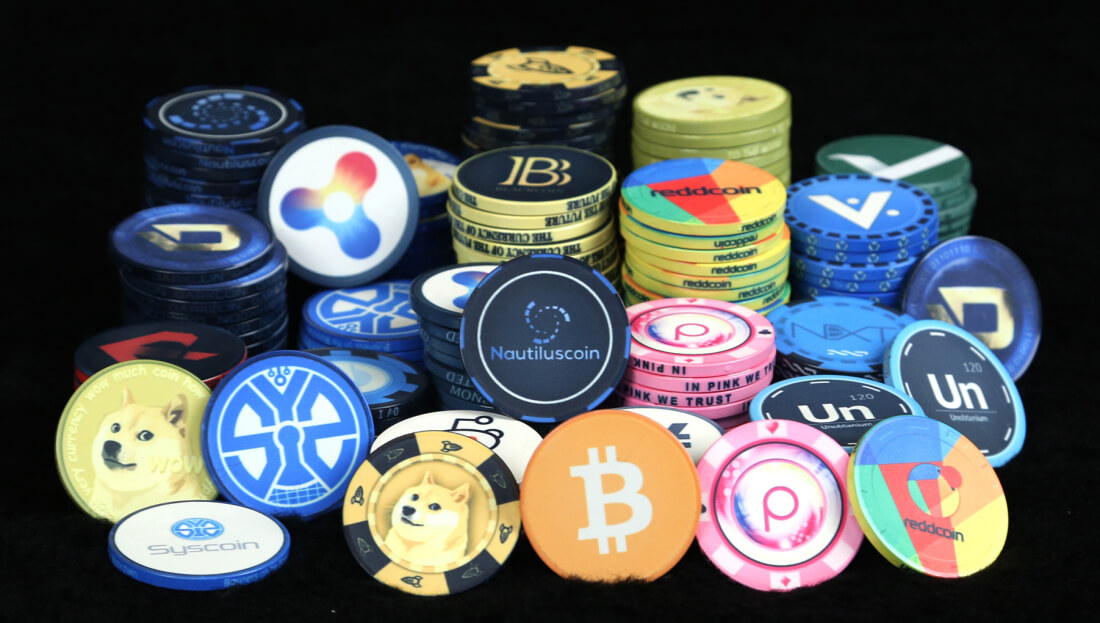
In another similarity to fiat currencies, there are numerous different cryptocurrencies, each with their own exchange rate. The three most commonly referenced are Bitcoin, Litecoin, and Ethereum. Things start to differ from standard currency when you consider competition and how each currency is maintained.
Bitcoin has been the de facto standard of cryptocurrencies for years. It's the most widespread, has the largest user base, and has the highest market cap. Lately there's been some conflicts between factions in the Bitcoin development community. Some want to add certain features, while others want to create a fork and go in a completely opposite direction with the currency. This is one of the reasons that we've seen so many alternative coins (altcoins for short) pop up recently.
Since most of the code is highly transparent or even fully open source, anyone can make their own cryptocurrency and blockchain implementation. The blockchain is a distributed database that contains the transaction records for the full network. This is at the heart of how Bitcoin and any other cryptocurrency works. Blockchain technology is so innovative that numerous high profile companies have started developing commercial products based on it. This includes Disney, IBM, the Big Four consulting firms, Microsoft, and more.
What is mining and can I make money by doing it?
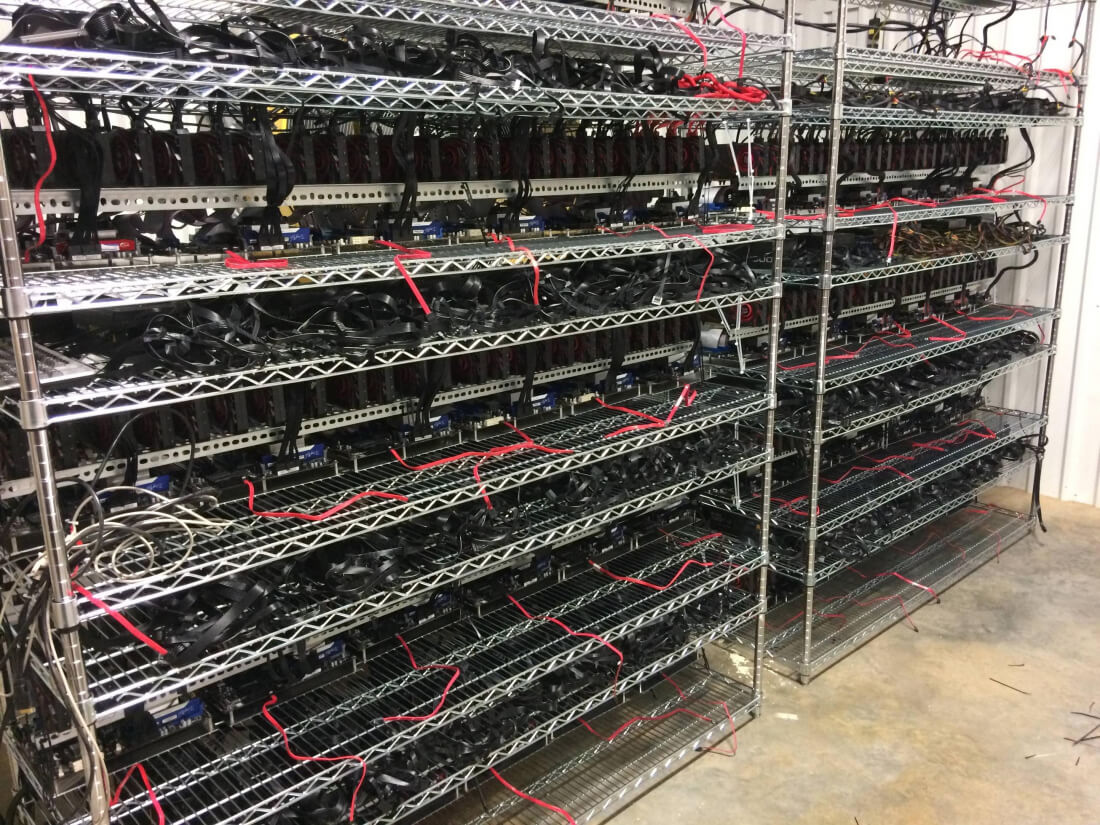
The inner details of how and why cryptocurrencies work can easily turn into a college-level math course. At a simple level, their stability and resistance to fraud is thanks to very large numbers. The process of mining is essentially guessing random numbers until you find one that is the solution to a particular problem. If you correctly guess that number, the network (Bitcoin, Ethereum, etc.) will reward you with a block (a certain number of brand new coins). This is how cryptocoins are created. The act of guessing these numbers helps verify transactions to maintain the security of the network, and add recent transactions to the blockchain.
But why is mining so popular now all of a sudden? It's hard to pinpoint the exact causes, but currency value has exploded in the past year which at least explains the amount of attention Bitcoin is receiving again. After trading for about $400 a year ago, a single Bitcoin went for ~$750 by year's end, and it is currently exchanging for as much as $2,600.
The Ethereum coin has also gained tremendous popularity and is the current coin of choice for miners, having also exploded from less than $50 in mid-2016. Current prices are going for $300+.
Cryptocurrency mining has followed a rather interesting timeline as trends and technologies change. Many years ago, it was possible to mine hundreds of Bitcoins by yourself using just your CPU. Eventually people figured out that a graphics card (GPU) was able to mine hundreds of times faster that the CPU due to the number of instructions per clock (repetitive math problems) it could execute. When people got tired of dedicating an entire GPU to mining, they came out with FPGA (Field Programmable Gate Array) based miners. These were general purpose circuit chips that were specially designed for mining Bitcoins. By this time, Bitcoin was gaining traction and value. Since there was a decent amount of money to be made, hardware developers started producing ASICs (Application Specific Integrated Circuits) which could mine thousands of times faster than a GPU.
This incredible advance in mining speed effectively left out all of the hobbyist miners who couldn't spend a fortune on gear. This led to the rise of altcoins like Litecoin and Ethereum, which were designed to be resistant to ASIC miners. That means you can mine Ethereum right now at your house on your gaming computer. No promises, but you might even make some money in the process.
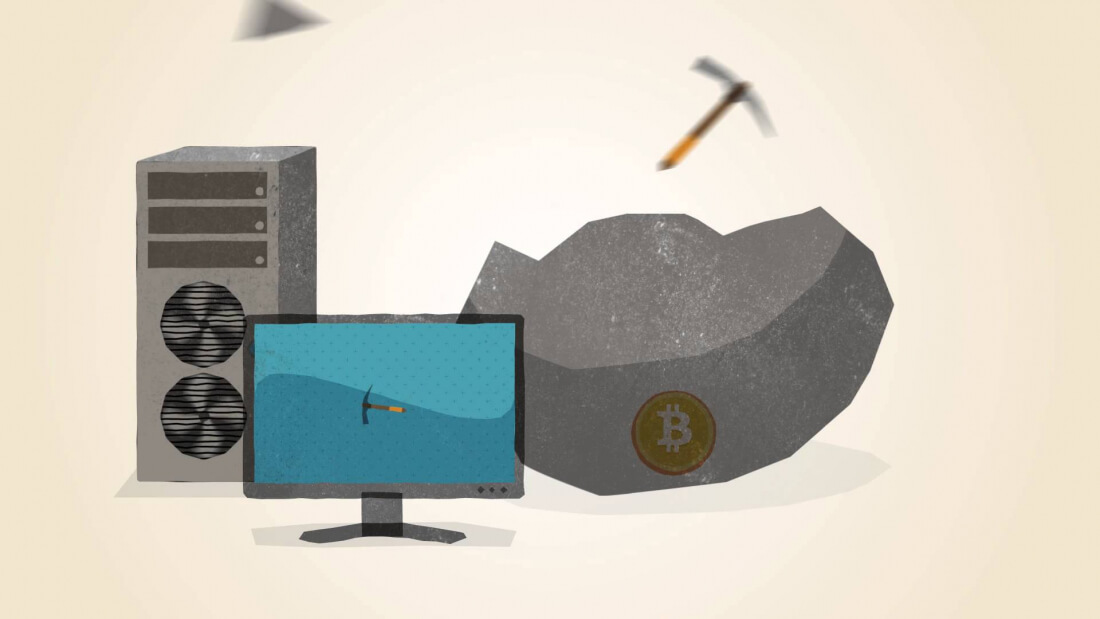
Before you get into mining, it's important to understand some basic realities. First and foremost, there's no guarantee you will make money. The price could plummet leaving you with nothing for all of your hard work (and electricity bill). Secondly, mining is expensive to get into. Depending on what hardware you have, you may not even be able to get the parts you need. With this new wave of mining popularity, graphics cards are in very short supply. A Radeon RX 480 that retailed for $240 at launch is sold out on every major retailer and will set you back $500+ on the secondary markets. Finally, even if you do make some money now, it likely won't be a steady source of income or last that long.
In order to protect against inflation, cryptocurrency mining employs a "difficulty" feature. This changes the complexity of the math problem to ensure that coins are always created at a constant rate. The more people that start mining, the higher the difficulty for that coin. Eventually the difficulty will be so high that it is no longer profitable to mine anymore. At this point, your hardware that was dedicated to mining will essentially turn into an expensive paperweight. Previously with Bitcoin and Litecoin, only AMD cards were suitable for mining. Nowadays though, Ethereum can be successfully mined with Nvidia cards as well.
A Quick Guide to Ethereum Mining
Now that you've been warned, we can start mining.
First you want to make sure you can actually make a profit doing it. Otherwise you're just wasting electricity. There are plenty of great calculator tools, I personally like this one over at MyCryptoBuddy. To use the tool, you need to figure out the hashrate of your graphics card. Search Google for "*graphics card name* ethereum hashrate." For example, an RX 480 will produce 25MH/s and a GTX 1070 can produce around 35MH/s. These numbers are different for each card and can change depending on overclocks and binning.
Once you have that, the basic steps are as follows:
- Get an Ethereum wallet
- Download some mining software
- Join a mining pool
- Configure and run your miner
- Profit?
A wallet is a place to put your freshly mined Ethereum (referred to as Ether). There are two main types of wallets, each with its own advantages and disadvantages.
The first and most popular is the standard Ethereum wallet available from the project's website. Download the client, wait for your computer to fully sync up with the network (this can take days), then start receiving Ether in your very own wallet. This method is simple and stores your coins on your computer. The downside is if your computer crashes or your hard drive breaks, you will have no way of recovering your coins unless you keep rigorous backups.
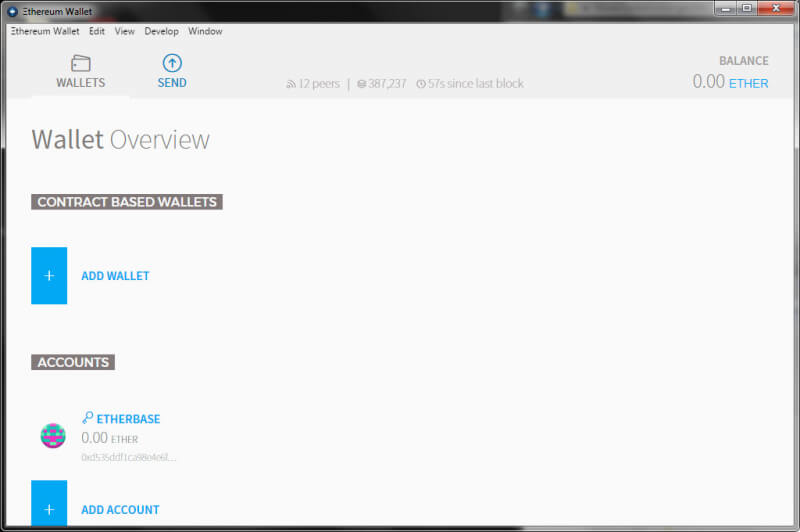
The second method is a keeping an online wallet through services like Coinbase and MyEtherWallet. This stores your coins in the cloud allowing you to access them from anywhere. Coinbase is extremely popular with Bitcoin and is what I use personally to store my coins. You can set up a wallet for free and you don't have to worry about downloading dozens of gigabytes worth of blockchain data like desktop wallets require.
Coinbase allows you to link a bank account which allows for easy conversion between BTC, ETH, USD, and more. The disadvantage to an online wallet is if the service goes down or if your account is compromised, you can lose your coins. There are lots of people trying to scam you, so be careful and stick with trusted organizations here.
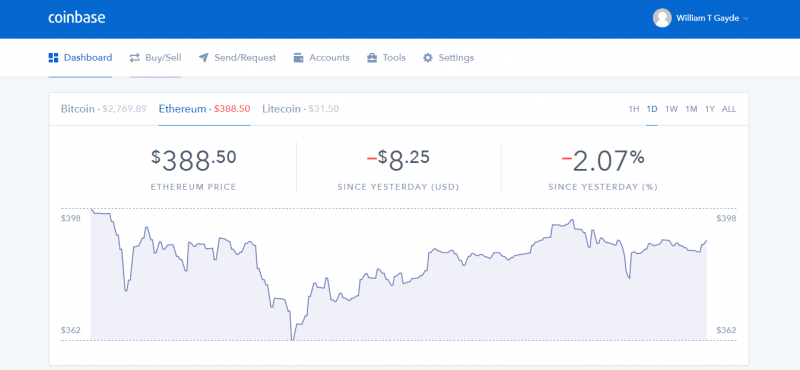
After you have the wallet of your choice, you'll want to download some mining software. The vast majority of miners work in pools. This allows a bunch of people to combine their hashing power as opposed to each person mining individually. Solo mining is possible but unless you have thousands of GPUs, realistically you will never make a single penny.
With pool mining, the problems are split up and distributed to each member. Your profit is proportional to the amount of work you contributed to each round of mining. Pools do charge a small fee (1-2% usually), but they're the best way to maximize your profit. Be careful of scams here again in both the miner and the pool you choose. I went with NanoPool as my mining pool and Claymore as my miner. Other pools include Ethermine and MinerGate. There are also other miners such as Genoils and QtMiner.
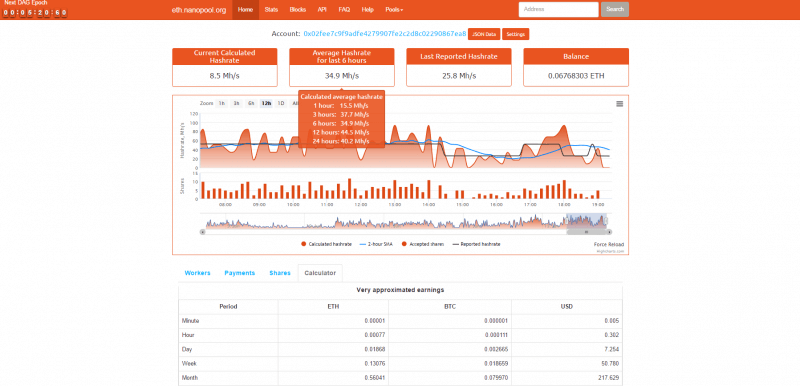
Once your wallet is set up, you will need to find your Ethereum address. It will be a long string of random characters starting with 0x. For example, mine is 0xac98477308aceAa4cFb2062032fcc60f4068d3ee. Each variety of mining software will be different, but generally they have three main settings: the address to send the coins, the pool address to send and receive instructions, and some variables depending on your hardware setup.
The pool you mine on will have an address that you will connect to when mining. For example, Nanopool's address is eth-us-east1.nanopool.org:9999. You probably won't have to change mining variables, so just keep those as you find them. You'll want to put everything together into a .bat file that starts the actual mining. It should look something like this:
setx GPU_FORCE_64BIT_PTR 0
setx GPU_MAX_HEAP_SIZE 100
setx GPU_USE_SYNC_OBJECTS 1
setx GPU_MAX_ALLOC_PERCENT 100
setx GPU_SINGLE_ALLOC_PERCENT 100EthDcrMiner64.exe -epool eth-us-east1.nanopool.org:9999 -ewal 0x02FeE7C9F9ADfe4279907fe2c2d8c02290867ea8.Worker2 -epsw x
The top 5 lines are the variables that you don't need to touch. EthDcrMiner64.exe is the actual mining program. -epoll eth-us-east1.nanopool.org:9999 is the address of the pool I am using. -ewal 0x02FeE7C9F9ADfe4279907fe2c2d8c02290867ea8 is my Ethereum address where I will receive my earnings. Worker2 is the name I have given this miner. You can usually name it anything want or even leave it blank if you only have 1 rig. Finally, -epsw x is the Ethereum pool password. It is usually just "x" and if it isn't, they will say. When you have everything ready to go, you can just let it run.
And you're on...
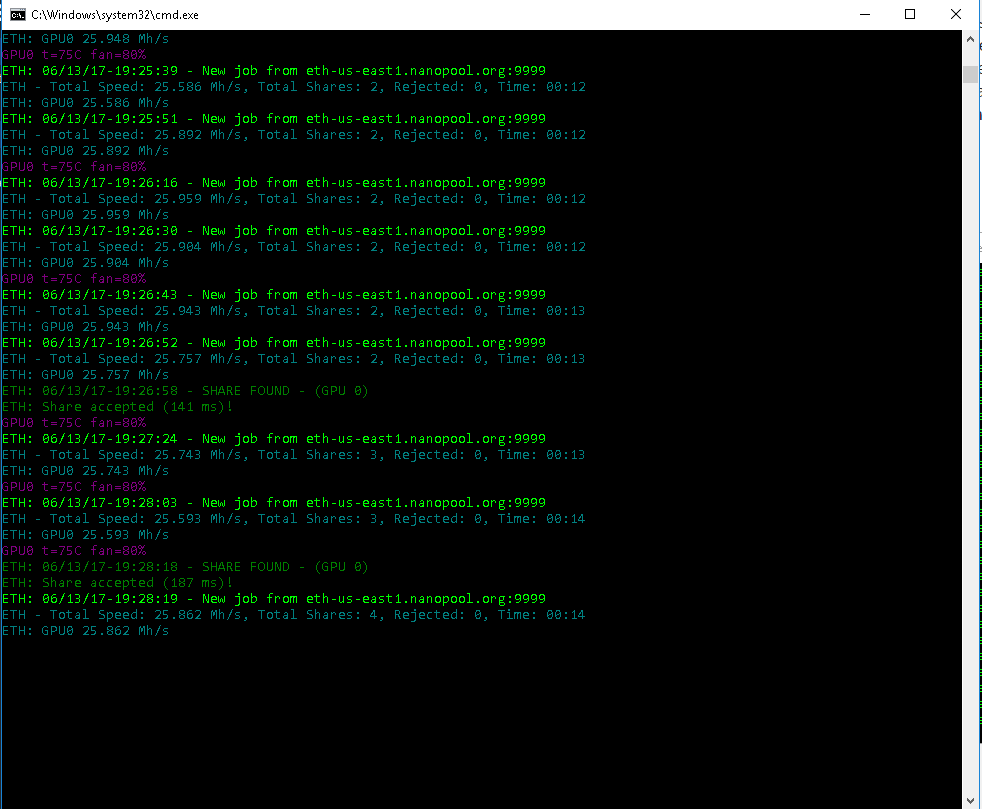
Now for some quick tips. You'll probably want to set your mining script to automatically run when your computer starts up. This can help in the event of a power outage or system crash. Next, pay close attention to your GPU's temperature. Mining is really hard on your components, so be sure to keep everything adequately cooled. If not, you will likely decrease the lifespan of your GPU. Finally, since mining only really uses your GPU, you can feel free to use your computer as you normally would. You won't be able to play games and mine at the same time, but everything else should be fine.
And that's about it. With some basic skills, it should only take a few minutes to set up a GPU miner. I would hesitate to go out and spend thousands of dollars on graphics cards, but if you want to make some extra cash, mining is an easy way to do it. Depending on how the price and difficulty fluctuate in the future, GPU mining of Ethereum could stay profitable for another week or another year. There's no way to tell. Unless you have dozens of cards sitting around, this isn't a get rich quick scheme. I see mining as a fun hobby that can also make a bit of money on the side.
Shopping shortcuts:
